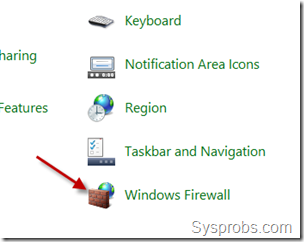
Also confirm ESET is removed from C:\program files and in the registry under > HKEY_CURRENT_USER > Software and HKEY_LOCAL_MACHINE_Software.

After reboot navigate to > C:\windows\system32\drivers and look for any drivers that start with epf. You likely have a leftover ESET Firewall Filtering driver that is not getting removed completely. I have followed the below however I can't seem to come right as the firewall refuses to return to a functioning state and have run out of ideas.

I have tried to reinstall and the same problem still persists. So I though I would google the issue but I see most users experiencing this issue do not have the ESET personal firewall in their LAN Properties as per below: jpeg below the ESET remote administrator states that one of our computer's firewall is not fuctional: Using a new exported Client Install Package should allow the SEP 14 firewall component to install and load without issue.As per the. Allow time for the client group policy to update, typically 3 to 5 minutes.Įxport a new Client Install Package and select the client group where you deleted the older rule "Protect client files and registry keys" or similar. Click OK to close out of the Application and Device Control Policy.Ĩ. Highlight rule " Protect client files and registry keys" or (similar rule) and click Delete and Yes.ĥ. Click Application Control and look for Rules Sets that block access to the registry, like: " Protect client files and registry keys"Ĥ.

On Application and Device Control, click Tasks > Edit Policy.ģ.

Open SEPM and go to Clients > Policies.Ģ. The older Application Control rule " Protect client files and registry keys" is no longer needed and essentially causes a problem as the two technologies (ADC and BASH) conflict while attempting to protect SEP.ġ. Toward the later builds of SEP 11.0 we switched technologies to protect SEP from ADC to Behavioral Analysis and System Heuristics ( BASH), which is also referred to as Tamper Protection. Some customers have an older Application Control rule that migrated when SEPM was updated and is called " Protect client files and registry keys" which will block write access when creating the Teefer2 key. Check your Application and Device Control (ADC) on the Symantec Endpoint Protection Manager (SEPM) and confirm if the Application Control policy has any Rule Sets to block access to the registry, especially to HKEY_LOCAL_MACHINE\SYSTEM\CurrentControlSet\services\Teefer2.


 0 kommentar(er)
0 kommentar(er)
